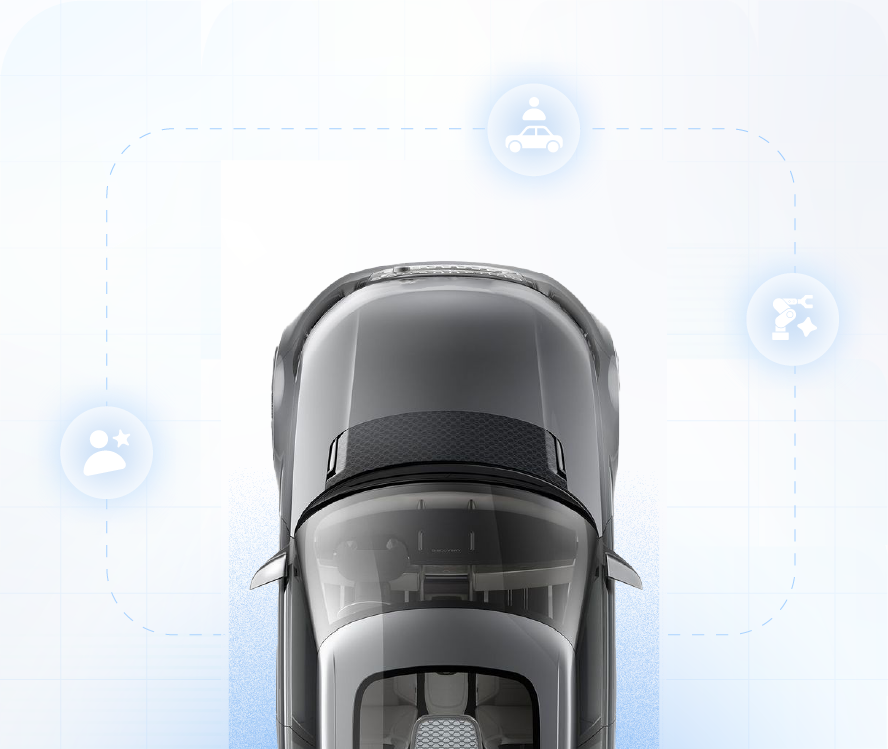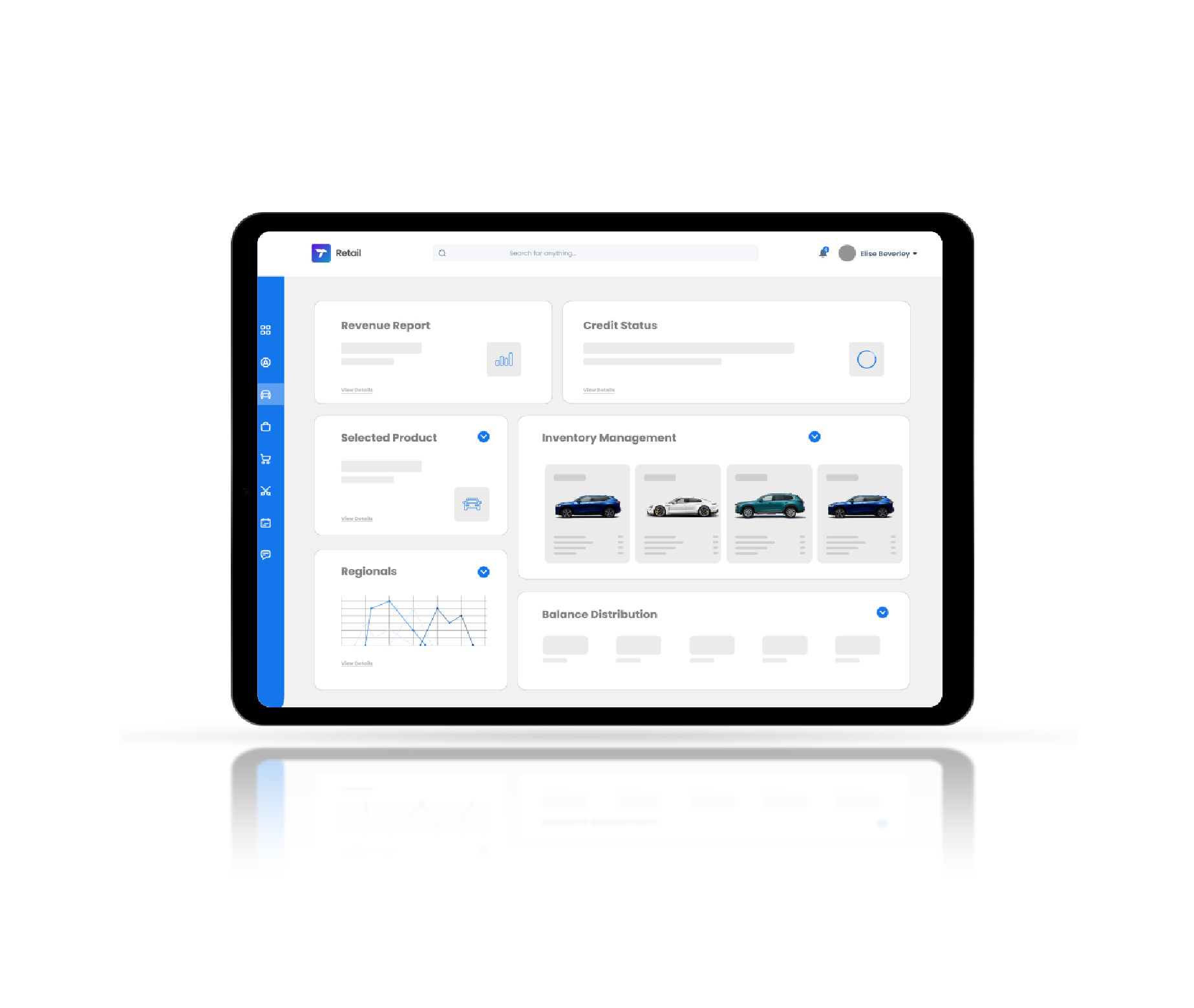Blog
Fleet finance transformation through MaaS
By Eva Kellershoff, on January 18, 2023
The Mobility-as-a-Service (MaaS) model is rapidly gaining momentum in the mobility ecosystem. MaaS integrates various services through a single platform, enabling users to access different modes of transportation from a single source. The MaaS model also optimizes resource utilization while reducing operational costs and the carbon footprint of operators and passengers. It is imperative for businesses to stay ahead of the curve when it comes to embracing new technologies. Companies that lag behind their competitors risk losing market share and revenue, which can have an adverse impact on profitability, stock value, and future growth potential.

Introduction
Transformation is not easy, but there are steps businesses can take to optimize their fleet operations with MaaS and other digital technologies such as Artificial Intelligence (AI), Machine Learning (ML), the Internet of Things (IoT), and Blockchain. The digital transformation of the retail industry has been rapid and continues to evolve, but supply chain finance has remained a complex and manual process. Manufacturers and suppliers struggle to maintain visibility throughout the fulfillment process, leading to a lengthy administrative process. Amid this backdrop, MaaS or 'Mobility-as-a-Service' refers to the trend of services that enable mobility through commercial leading software or subscription-based transportation services. With MaaS, businesses can simplify their supply chains and empower their partners with visibility in real time.
What is MaaS?
MaaS is a single platform that integrates various services, including booking, routing, payment, tracking, and more, from different transportation providers (i.e. taxi, public transit, car rental, etc.). It provides a seamless travel experience, enabling users to seamlessly navigate through various modes of transportation. MaaS optimizes resource utilization and reduces operational costs for service providers. It also increases passenger convenience due to its single source booking function. In the mobility sector, MaaS is primarily used to book private and public transportation services, including passenger cars, taxis, shuttles, and ride-sharing services. The MaaS model is also referred to as a 'passenger economy', where passengers can access multiple modes of transportation from a single omni-channel retail platform. For example, if passengers want to book a cab from their home to the airport, they can use a single app to look for nearby taxis and select a ride-sharing option if suitable. According to Global Marketing Insights Inc., demand in the car-sharing market is expected to cross $6.5 billion by 2027.
Benefits of MaaS
MaaS offers various benefits for businesses, customers, and society. For fleet operators, it improves customer satisfaction, operational efficiency, and service quality. It also has a positive impact on the environment, lowering greenhouse gas emissions and improving air quality. For customers, it provides convenience and flexibility while reducing transportation costs. Furthermore, it offers operational benefits, such as real-time booking and scheduling, optimized resource utilization, and cost reduction. Even regulators and policymakers recognize the tangible benefits of MaaS, as it has the potential to positively disrupt the mobility sector. For society, it can help reduce traffic congestion, pollution, and carbon emissions, which can have a long-term impact on public health and the environment. It can also have a positive impact on transportation costs and productivity. For example, MaaS can help businesses improve the productivity of employees by reducing the time spent commuting to work.
Importance of digital transformation in fleet management
Fleet management is a critical function for businesses that rely on a fleet of vehicles for their operations. Fleet operators are responsible for managing the lifecycle of vehicles, including maintenance, repairs, fuel, insurance, and driver recruitment. Fleet managers also need to comply with industry regulations and government guidelines, including safety standards. With the advent of new technologies, fleet operators can leverage a digital transformation strategy to streamline business processes and reduce costs. To achieve this, they can use a single app to integrate their fleet operations with other services such as insurance, maintenance, and booking. For businesses, digital transformation provides an opportunity to transform their business operations through the use of new technologies. It also helps organizations reduce costs and improve the customer experience. For example, fleets can leverage MaaS to improve the process of booking a ride and simplify the payment flow for passengers. Digital transformation can be challenging for businesses, as it requires a cultural shift towards adopting new technologies. It also requires investment in resources, especially in hiring data scientists and engineers who can use AI and ML to optimize business processes.
Streamline Business Processes with AI and ML
AI and ML are algorithms that help organizations - including fleet operators - make data-driven decisions. These technologies are especially important for fleet operations, which generate large amounts of operational data. AI and ML can help businesses identify and analyze patterns in data, increasing operational efficiency and enabling them to make timely decisions. Businesses can use AI and ML to identify patterns in operational data generated by their fleets. With this insight, they can optimize business processes, including insurance, maintenance, and bookings. For example, if a vehicle part of a fleet experiences an accident, AI can alert the fleet manager. After receiving the notification, the fleet manager can use AI to look at the details of the accident and determine the required action.
Leverage the Cloud for Seamless Data Storage and Mobility Platforms
Cloud computing is a technology that enables businesses to store and process data remotely rather than on-premises. Businesses can use the cloud to host their onboard computer systems, including mobile applications for drivers and passengers and analytics software. The cloud acts as a scalable and secure computing environment where businesses can store data, software, and other resources. It is a cost-effective alternative to on-premises computing, enabling businesses to scale resources up or down according to their demand. Fleet operators can use cloud computing to store data from their onboard computer systems. For example, they can use the cloud to store data related to the vehicles in their fleet, including the location of a vehicle, maintenance data, and driver behavior. Businesses can also use the cloud to host mobile applications and analytics software. It provides an easy way to scale computing resources and can be an ideal option for businesses that don't have the in-house expertise to manage on-premises computing.
Integrate Blockchain to Enhance Safety and Security
Blockchain is a distributed ledger that records and verifies transactions through a shared database. It enables two parties to transact with each other without the need to trust each other. Blockchain provides a secure and transparent environment where parties can share data without the risk of it being altered or hacked. Fleet operators can use blockchain to enhance the safety and security of their operations. It can also help them comply with industry regulations, such as the U.S. Federal Aviation Authority (FAA) cyber security guidelines and upcoming EU General Data Protection Regulation (GDPR) guidelines for protecting customer data. While blockchain can address security concerns, it is essential for fleet operators to understand the technology and have the in-house expertise to leverage its benefits.
Change in Consumer Behavior
Consumers are increasingly embracing new technologies in order to optimize their daily activities. Mobile internet usage is expected to grow at a compound annual growth rate (CAGR) of 13.7%, from USD 1.4 billion in 2022 to 2.7 billion by 2027. There is a growing need to collaborate and create a single customer view across departments such as marketing, sales, service, and support. This will help strengthen customer relationships and increase retention rates. Consumers have become more demanding, and companies need to adapt to their needs. This includes offering mobile-friendly services that can be accessed on the go.
Digital Transformation of Fleet Management
With the rise of Mobility-as-a-Service (MaaS) and autonomous vehicles, the entire fleet management process is expected to undergo a significant transformation. The ecosystem is evolving from an owner-operator model to a MaaS model. Once the operator has introduced MaaS, the customer can access a number of transportation options from a single platform. This will help customers choose the most suitable option for their trip. According to the Australasian Transport Research Forum, MaaS fleet can help in 50% reduction in fuel costs. MaaS also optimizes resource utilization, enabling fleet owners to manage their assets more efficiently. It also benefits passengers by reducing their travel time and increasing the availability of transportation options. Additionally, MaaS can help to reduce carbon emissions and improve overall urban mobility.
Benefits of MaaS in Fleet Management
Businesses can reduce costs by switching to the MaaS model. The owner-operator model has to incur costs such as vehicle procurement, fuel costs, insurance, and maintenance. However, these expenses are eliminated in the MaaS model. It provides a single source of transportation, which is convenient for customers as they don't have to go through different websites and apps to access different modes of transportation. This helps to build a positive customer experience, which can help to increase customer retention rates. MaaS can enable the use of vehicle tracking and monitoring systems to track the location of vehicles and real-time passenger information. This will help to increase safety for passengers and drivers. MaaS also enables the use of vehicle pooling and multimodal booking. However, the total cost of ownership (TCO) for a MaaS fleet can be up to 20% lower than a traditional fleet, according to a study by the University of California, Berkeley.
Identifying Business Requirements for Digital Transformation
Every business transformation journey is unique and driven by specific business requirements. Before introducing a new technology, it is essential to understand the business requirements and define the desired outcomes. This will help to select the right technology for the business and minimize the risk of project failure. The following steps can help businesses to identify their requirements for digital transformation and decide how to best implement MaaS in fleet management:
- Define the business objectives - The first step is to define the business objectives. These are the reasons why the business wants to go digital. It is essential to understand why the business wants to adopt new technologies to avoid implementing solutions that don't solve any existing issues.
- Identify pain points - Once you know the objectives, you can identify the pain points in the current business process. These are the areas that can be improved by digital transformation.
- Choose the right technology for the business - Once the business requirements are identified, it is vital to decide which technology best fits the business. This will help to save time and avoid wasting money on unnecessary projects.
Conclusion
The Mobility-as-a-Service model is transforming the travel and transportation industry. MaaS integrates various transportation services from different providers through a single app, providing a seamless travel experience. It also optimizes resource utilization and reduces operational costs for service providers while increasing passenger convenience. With the advent of new technologies, businesses can transform their fleet operations through a digital transformation strategy. Businesses can use AI and ML to streamline business processes, leverage the cloud for seamless data storage, and integrate blockchain to enhance safety and security. Fleet operators that have not yet embraced the digital transformation process need to start now.
NETSOL has been proudly serving automotive finance and cloud based lease automation software companies worldwide with smart software technology for over four decades and is itself broadening its offering to the wider industry with solutions now covering services such as shared mobility and online vehicle retailing.
NETSOL's premier platform that futureproofs operations for the global automotive finance and leasing industry, NFS Ascent, is also available on the cloud, enabling you to gain access to the same unrivalled platform used by bluechip and Fortune 500 companies via rapid deployments, flexible, subscription-based pricing and the ability to scale on demand.
Related blogs

Blog
The future of wholesale finance: Why mobile technology is transforming OEM-dealer relationships

Blog
Transitioning to smarter dealership operations without disrupting sales

Blog



